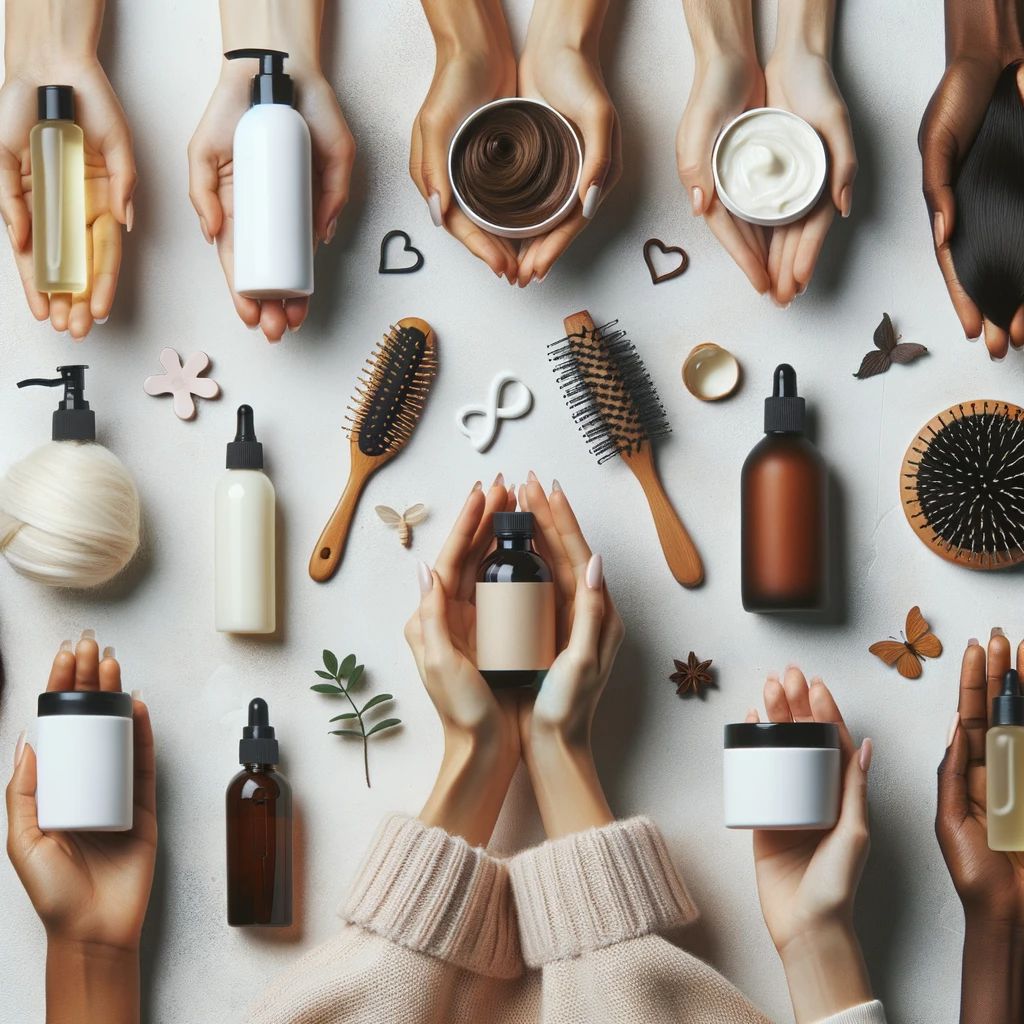Table of Contents
Introduction
When it comes to our appearance, few things are as central to our self-esteem as our hair. But what happens when those luscious locks begin to lose their luster, becoming damaged and lifeless? Fear not, for this article is your ultimate guide to bringing your hair back to life.
We’ll explore effective strategies, backed by science and real-world examples, to help you reclaim the radiant, healthy tresses you deserve.
Embracing the Power of Olaplex Bond Maintenance System
A revolutionary product that has taken the hair care world by storm is the Olaplex Bond Maintenance System. It’s not a one-time fix but a comprehensive approach to repairing and maintaining hair health. Olaplex works wonders by rebuilding and strengthening hair bonds.
While we won’t delve too deeply into it here, remember to incorporate it into your hair care routine for long-lasting results.
Understanding Hair Damage

Types of Hair Damage
Hair damage can manifest in various ways, often categorized into three main types: chemical, heat, and environmental.
Chemical damage occurs due to excessive use of harsh hair products, while heat damage results from frequent styling with hot tools. On the other hand, environmental damage is caused by exposure to elements like UV rays and pollution. Understanding these types is the first step toward effective repair.
The Science Behind Hair Damage
To combat hair damage, it’s essential to grasp the science behind it. Hair’s unique structure and composition make it susceptible to harm. Knowing the causes of damage, such as cuticle erosion and protein loss, empowers you to make informed choices in your hair care routine.
Identifying Damaged Hair
Signs of Hair Damage
Before we embark on the journey to healthier hair, let’s identify the signs of damage. Common indicators include split ends, frizz, breakage, and lackluster appearance. By recognizing these signs early, you can take action to prevent further harm.
Self-Assessment: Is Your Hair Damaged?
Take a moment for some self-reflection. Examine your hair closely and consider its texture, shine, and manageability. If you notice any signs of damage, it’s time to implement a repair plan.
Hair Repair Strategies
Nourishment and Hydration
One central point in revitalizing damaged hair is nourishment and hydration. Proper nutrition and hydration are essential for hair health, so be mindful of your diet and water intake. Nutrients like biotin, vitamins A and E, and omega-3 fatty acids promote hair growth and strength.
Protective Styling
Another key strategy is protective styling. This practice involves safeguarding your hair from external factors that cause damage. Embrace hairstyles like braids and buns to shield your hair from environmental stressors and minimize friction.
Minimizing Heat Exposure
Excessive heat styling can be detrimental to your hair’s health. Lowering the heat on your styling tools, using heat protectants, and limiting heat styling to special occasions can significantly reduce the risk of damage.
Evidence-Based Solutions
Scientific Studies on Hair Repair
To substantiate our advice, let’s turn to scientific studies. Research has shown that certain ingredients, like keratin and panthenol, can repair damaged hair by restoring essential proteins and moisture. Look for products containing these ingredients for optimal results.
Success Stories of Individuals with Damaged Hair
Real-life success stories offer inspiration and motivation. Many individuals have successfully rejuvenated their damaged hair through consistent care routines. These stories remind us that recovery is possible, no matter how dire the situation may seem.
Real-Life Examples of Hair Repair Techniques
We’ll share real-life examples of effective hair repair techniques for practical guidance. These tried-and-true methods have helped countless people transform their damaged hair into a crowning glory.
Practical Steps for Hair Repair

Building a Hair Care Routine
Creating a personalized hair care routine is crucial. Consider factors like your hair type, lifestyle, and goals when designing your regimen. Consistency and patience are key to success.
Steps for Repairing and Preventing Hair Damage
We’ve broken down the steps for repairing and preventing hair damage into actionable tips. From choosing the right shampoo to incorporating weekly deep conditioning treatments, these steps are your roadmap to healthier tresses.
Common Mistakes to Avoid
As we journey toward healthier hair, avoiding common pitfalls is important. Avoid overuse of hot tools, harsh hair products, and aggressive brushing to prevent further damage.
Maintaining Healthy Tresses
Transitioning from Repair to Maintenance
After successfully repairing your damaged hair, it’s essential to transition to a maintenance phase. This phase involves regular trims to eliminate split ends, embracing protective hairstyles, and avoiding harmful styling habits.
Tips for Long-Term Hair Health
To ensure the longevity of your healthy tresses, follow these tips. Regular trims, protective hairstyles, and conscious styling choices will keep your hair looking vibrant and damage-free.
Conclusion
In conclusion, revitalizing damaged hair is achievable with the right knowledge and commitment.
By understanding the types and causes of hair damage, identifying signs of damage, and implementing evidence-based repair strategies, you can embark on a transformative journey to healthier, more beautiful hair.
Remember, it’s not just about repairing damage—it’s about embracing a lifelong commitment to the well-being of your tresses. You can have the healthy hair you’ve always dreamed of with dedication and the right techniques.













